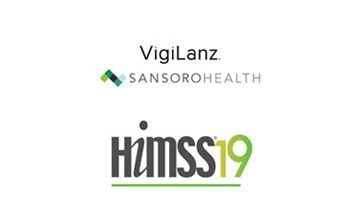Resources
Top 4 Ways Health Systems Benefit from An API Approach to Clinical Surveillance
Speed is one of the most essential attributes of an effective approach to clinical surveillance. The faster patient data can be pulled from the EMR and sorted by clinical surveillance technology, the more quickly physicians and pharmacists can receive targeted alerts that lead to more optimal patient care decisions.
These alerts might be related to the identification of potential medication errors, the inappropriate use of antibiotics, or a possible outbreak of an infection such as C. diff.
To read about how health systems are using clinical surveillance to enhance patient care, read “Clinical Surveillance: The Next Step in Value-Based Care.”
At the recent HIMSS Conference in Orlando, Adam Klass, chief technology officer at VigiLanz, and Dave Levin, MD, chief medical officer, Sansoro Health, spoke about how application programming interfaces (APIs) can be a gamechanger in clinical surveillance because they help data flow between EMRs and clinical surveillance solutions more quickly.
To view their full presentation, click here.
“We’re dealing with really important clinical problems here, and the sooner we can get these solutions in place and begin to impact the outcomes, the better for everyone,” said Levin.
APIs vs. HL7
For many years, most healthcare systems have transferred data from EMRs to outside solutions, such as clinical surveillance technology, via HL7 interfaces. But there are some drawbacks to this approach.
According to Klass:
- The HL7 standard is interpreted in many different ways, which can raise confusion.
- Hospital IT departments must spend time validating transferred data to ensure it is exchanging properly.
- The approach requires building interfaces and maintaining them, which can be costly and time-consuming.
API data acquisition and transfer, on the other hand, provides a “more unified” data model, Klass said. Information is pulled from the EMR in near real time, in a standard format, and it’s always sent to partners the same way, regardless of the EMR from which it originates.
“The value as you build out a full API footprint is getting that full clinical model from Day 1, so you’re not having to circle back to healthcare organizations to gather more data over time,” Klass said. “The hospital IT team involvement becomes significantly less as you use these APIs. The cost is also significantly less because you remove the maintenance and support that goes into supporting interfaces.”
Growing movement
More and more hospitals are recognizing the benefits of the API approach to data transfer. In fact, 30 health systems are already using APIs to exchange EMR data with VigiLanz’s platform, and many more are starting to implement the technology, said Klass.
He cited the following four benefits:
- Less hospital IT department time spent on clinical surveillance.
- Reduced hospital costs associated with clinical surveillance (hospitals no longer need to build interfaces, oversee numerous file transfers, or bring in consultants to assist with the work).
- Faster implementations.
- Broader accessibility for providers to clinical surveillance tools immediately after implementation.
Levin agrees. “An API approach to integration greatly reduces the amount of time that’s required to deploy the [clinical surveillance] solution and that translates into a cost savings,” he said. “But more importantly, it translates into a better user experience, a richer data set that takes a product that’s already really good and makes it even better.”
Unlocking Patient Safety: The Power of Autodetection in Healthcare
The key to preventing safety events and reducing harm is not about what you know is happening, but what you don’t know. Hear from Dr. Chris Emerson on how autodetection can help healthcare leaders gain visibility into the true state of patient safety inside their institutions.
Enhancing Patient Safety with Automated Event Detection: A Hospital’s Guide
Discover the benefits of autodetection, why every hospital should deploy it, and how one innovative health system is using it to enhance patient safety.
